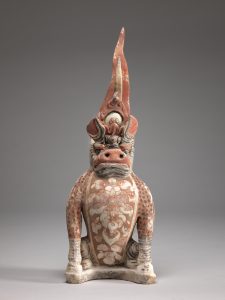The formation of the Reid Collection during the 1990s and the beginning of the 21st century diverged from the earlier collecting practices of Chinese art as demonstrated by both the Hart and Todd Collections. All of the 15 objects from the Reid’s were acquired either from well-established asian art galleries around the world, such as Eskenazi in London and Kaikodo in New York, or from well-known auction houses such as the Sotheby’s. The Reids also participated in Asia Week and asian art fairs, when many dealers and galleries specialized in asian art exhibited together. Such a change in the method of acquiring Asia art, particularly antiquities, reflects the development of more regulated art markets in the later half of the 20th century. A particular catalyst for the shift was the UNESCO 1970 Convention on November 17, 1970. The convention was strongly against the export of culturally significant objects from their countries of modern discovery, particularly archaeological remains (For more reference see Selected Resources and Bibliography). While the implementation of this guideline and legislation of exporting cultural property varies from country to country, the UNESCO 1970 Convention and ensuing professional guidelines greatly influence the standards of provenance research conducted in the art world nowadays.
Compared to the Hart and Todd Collections, the Reid Collection demonstrates a more diverse collecting interest in Chinese art, as these 15 objects vary greatly in both period and material, ranging from the Majiayao Culture pottery vase from the Neolithic Period ( 3000-2000 BCE) to a purple-splashed Junyao bowl from Yuan China (1279-1368). Furthermore, the practice of acquiring objects for study and of collectors publishing catalogs for their own collections has largely been replaced by the prepared research conducted by gallery or auction houses when selling the objects to illustrate the art objects’ credibility and authenticity. For example, this pair of Two Small Painted Ceramic Earth Spirits (618-907) purchased from Kaikado were published in the Kaikado Journal XX, no. 74, with detailed descriptions as well as stylistic analyses with other comparable objects from other museum collections. It is also interesting to note that no.75, a pair of tomb guardians published right after the ones in Reid Collection, is currently part of the Asian Art Collection at Princeton University Museum of Art: https://artmuseum.princeton.edu/asian-art/objects/55280/.
